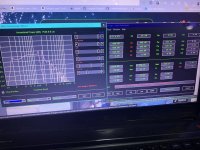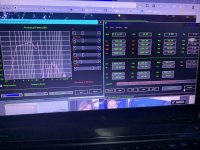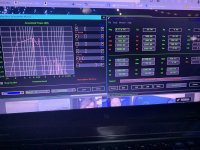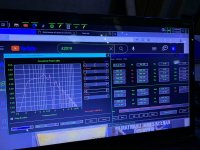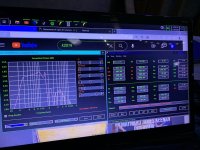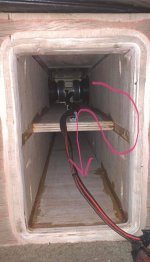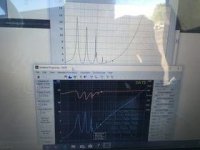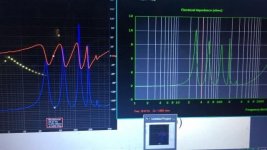Look at the gap or make it worse? It can be damped out or it can be dialed in ‘perfect?? But if it’s screwed up it has issues
Attachments
It shows up in reality (white pic is misaligned and sizes wrong and doesn’t match). (it doesn’t have simple, perfect rectangles lined up at three to one. And it has this hiccup on the 3rd impedance peak and the. The funky freq response in that area is (weird) for lack of a better description ??
Attachments
Can’t figure out if this is causing issues and needs to be fixed in these complex enclosures so there’ perfect’ from every angle (no pun intended😆)
They way I see (hear) it is that simulated "perfectly tuned" parallell tuned QW resonators will de-tune and become misaligned based on signal character, power-levels and changing exit environments (radiation impedance). And this will all change constantly during the wildly varying signal character when reproducing music. Some careful damping of the sections and some low pass filtering will lessen the problem, but never eliminate it completely. If you could measure the response while actually reproducing complex dynamic signal at some real life power levels then you would most certainly see this nonlinear de-tuning in action. I know I can easily hear it in the few different high order parallell QW designs we have built.
Series tuned high order QW designs does not have this problem.
Series tuned high order QW designs does not have this problem.
We share the same experiences and have built these things to ‘know’.. I wish more people would so these questions weren’t so foreign or sound so ambiguous. Much respect for everything you’ve shown over the years. It was a beacon towards some really exciting stuff.They way I see (hear) it is that simulated "perfectly tuned" parallell tuned QW resonators will de-tune and become misaligned based on signal character, power-levels and changing exit environments (radiation impedance). And this will all change constantly during the wildly varying signal character when reproducing music. Some careful damping of the sections and some low pass filtering will lessen the problem, but never eliminate it completely. If you could measure the response while actually reproducing complex dynamic signal at some real life power levels then you would most certainly see this nonlinear de-tuning in action. I know I can easily hear it in the few different high order parallell QW designs we have built.
Series tuned high order QW designs does not have this problem.
I end up restricting one side a bit (mass load) and dampen it all lightly to fix the screwed up parallel (paraflex) PA. Versions when using indoors that are quite a ways off or have been sized disproportionally in the past and nobody looks to fix these issues you found , they just damp them away in PA. and ignore Other potential methods (in car audio boundaries for example)
Last edited:
I do t think anyone could be further ‘off’ then the paraflex models shown in that FB group who now stopped Sharing things as they ‘cram’ the problem away(which may be the only design that actually pans out further than loud obnoxious PA fatigued listening otherwise ? To hard to tell, the sims are weirder every day and detach from
the folding and other details (CSA) and more unfortunately….
so intersting otherwise and plain jane versions work excellent in my personal use
Last edited:
- Home
- Loudspeakers
- Subwoofers
- The ‘overlap’ of misaligned resonators?
